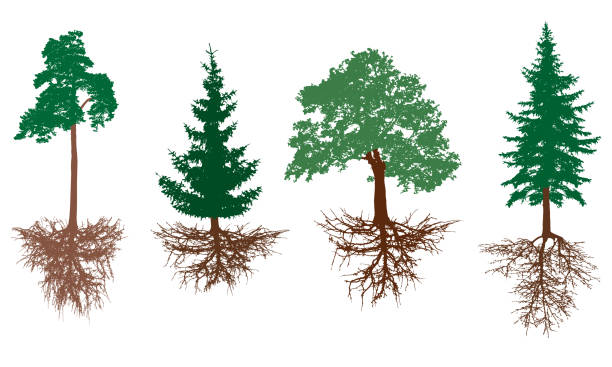Root Systems: The Hidden Foundation Strengthening Trees

When we admire the towering beauty of a tree, it’s easy to overlook the vital role played by its root system beneath the surface. The roots of a tree act as its hidden foundation, providing essential support and strength. In this blog post, we’ll explore the ways in which root systems strengthen trees, enabling them to thrive and withstand the challenges of their environment.
Anchoring and Stability
One of the primary functions of a tree’s root system is to anchor it firmly in the ground. Roots extend deep into the soil, creating a strong foundation that keeps the tree upright even during strong winds or storms. The extensive network of roots grips the soil, preventing toppling or uprooting, especially in larger and more established trees with deeper root systems.
Nutrient and Water Absorption
Roots play a crucial role in absorbing water and nutrients from the soil, which are essential for a tree’s growth and overall health. The root system’s extensive surface area, covered in fine root hairs, enables efficient absorption of water, minerals, and other vital elements. These nutrients are then transported to the rest of the tree, supporting its various functions, including leaf development, flowering, and fruit production.
Storage of Energy Reserves
Roots serve as a storage reservoir for energy reserves, such as starches and carbohydrates, which are essential for a tree’s survival. During periods of dormancy or limited resource availability, the roots store excess energy produced through photosynthesis in the tree’s leaves. This stored energy helps sustain the tree during times of stress, such as winter or drought, allowing it to survive until favorable conditions return.
Soil Stabilization and Erosion Prevention
Tree roots play a significant role in stabilizing soil and preventing erosion. As roots grow and spread through the soil, they bind it together, creating a more stable structure. This prevents soil erosion caused by wind or water, reducing the risk of landslides or soil loss. Trees with extensive root systems are particularly effective in protecting slopes, riverbanks, and coastal areas from erosion, contributing to overall ecosystem stability.
Soil Improvement
Root systems have a positive impact on soil health and quality. As roots grow and penetrate the soil, they create channels and pathways that improve soil aeration and drainage. Additionally, root exudates—organic substances released by the roots—nourish beneficial microorganisms in the soil, fostering a healthy soil ecosystem. This symbiotic relationship between roots and soil contributes to nutrient cycling, soil structure improvement, and overall soil fertility.
While the crown of a tree may capture our attention, it’s the root system that provides the strength and resilience necessary for a tree’s survival. Anchoring the tree, absorbing nutrients and water, storing energy reserves, preventing erosion, and improving soil health are just a few of the vital roles played by roots. Understanding the significance of root systems allows us to appreciate the hidden foundation that supports and strengthens our magnificent trees. So, next time you encounter a majestic tree, remember to acknowledge the remarkable roots beneath the surface that contribute to its grandeur and longevity.




